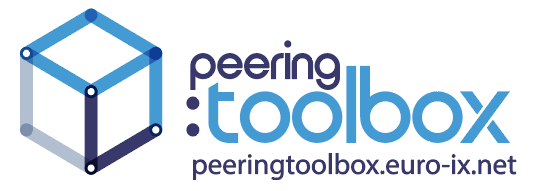This is an old revision of the document!
Table of Contents
Interconnections
This section of the Toolbox describes the Internet ecosystem and how network operators interconnect with each other to create what we know as the Internet.
What is a Network Operator
A network operator is an entity which is running a TCP/IP based network infrastructure, providing access to:
- end users: these end users could be residential, businesses, content developers and hosts, educational institutions, charities, government departments, and so on.
- other network operators: the Internet is hierarchical and some network operators only provide Internet access to other network operators; others may also provide Internet access to end users as well.
A network operator will have their own Internet resources, namely their own IP address space (IPv4 or IPv6 or both) and their own Autonomous System number (the globally unique identifier for their network as used by the Border Gateway Protocol (BGP), the routing protocol of the Internet).
Entities without their own Internet resources are not considered network operators for the purposes of this toolbox as they cannot participate in the activities being described here without those independent resources.
Internet resources are obtainable from the Regional Internet Registries (AfriNIC, APNIC, ARIN, LACNIC, RIPE NCC) and their websites should be consulted for further information about membership and obtaining resources.
Network Operator Goals: Access
The primary goal of a network operator is to provide Internet access to their users or customers (be these end-users or other network operators).
The vast majority of content consumed by Internet users today is made up of social media and videos. This content is distributed by the multi-national content providers and content distribution networks.
To provide the highest bandwidth and highest quality access to this content, a network operator positions their network as close as possible to the content providers. There are two ways of doing this: peering, and transit.
Peering
Peering is the connection of one network operator to another network operator to exchange traffic originated by each network operator.
The vast majority of peering does not attract traffic charges - it is known as “settlement-free peering”.
Peering can take place in two forms:
- Private peering is where there is a private connection between the two network operators for the purpose of exchanging traffic.
- Public peering takes place at a public peering point, commonly known as an Internet Exchange Point (IXP).
Transit
Transit is the purchasing of Internet access by a network operator from another network operator (known as their upstream provider).
The vast majority of transit attracts traffic charges, with charges being levied on traffic levels (typically measured in US$ per Mbps), rather than outright volume (as still happens in a few locations).
Network Operator Goals: Costs
Network Operators strive to minimise the cost of access to the content their end users demand.
Transit costs money, peering does not (after the initial set-up), which means that network operators strive to peer as much as possible. Transit is considered a last resort, only to be used for low volume content sources or other destinations which cannot be reach by peering.
It is estimated today that around 80% of all traffic for a typical access provider can be obtained by peering. (This is based on observations of real traffic profiles by the author.)
What is an Internet Exchange Point
To be done…
The Internet Eco-System
The global Internet is made up of all types of network infrastructure operators. They might be categorised as follows:
- Access Providers
- Regional Providers
- Global Providers
- “Tier-1s”
- Content Providers
- Content Distribution Networks
- Internet Exchange Points
All these network infrastructure operators interconnect with each other in a variety of ways.
Access Providers
Provide access to end users only. They buy transit and participate at Internet Exchange Points.
Regional Providers
Have a presence in many economies. They provide transit to Access Providers, and may be Access Providers themselves (either directly or through specific local subsidiaries). They usually participate at Internet Exchange Points.
Global Providers
Have a presence in some or most of the continents on the planet. They provide transit to Access and Regional Providers, but are unlikely to be Access Providers themselves. They might participate at Internet Exchange Points (either directly or through specific local subsidiaries).
"Tier-1s"
The Global Providers who do not need any transit. Tier-1s only peer with each other. They do not participate at Internet Exchange Points.
Content Providers
Are responsible for generating the distributed content that most end-users are interested in accessing. Content providers have their own infrastructure and transit networks, and participate at Internet Exchange Points.
Content Distribution Networks
Operators who use their own infrastructure and transit networks to deliver content either by private peering or by peering at Internet Exchange Points to the Access Providers whose end users consume it.
Internet Exchange Points
The Internet Exchange Point is the foundation on which the entire Internet is built, facilitating large volumes of peering between the different types of network infrastructure operators.
References
This content is sourced from many contributors, including:
- Value of Peering Presentation - Philip Smith
- Network Startup Resource Center
- Input from Mark Tinka, Kurt Erik Lindqvist, etc

